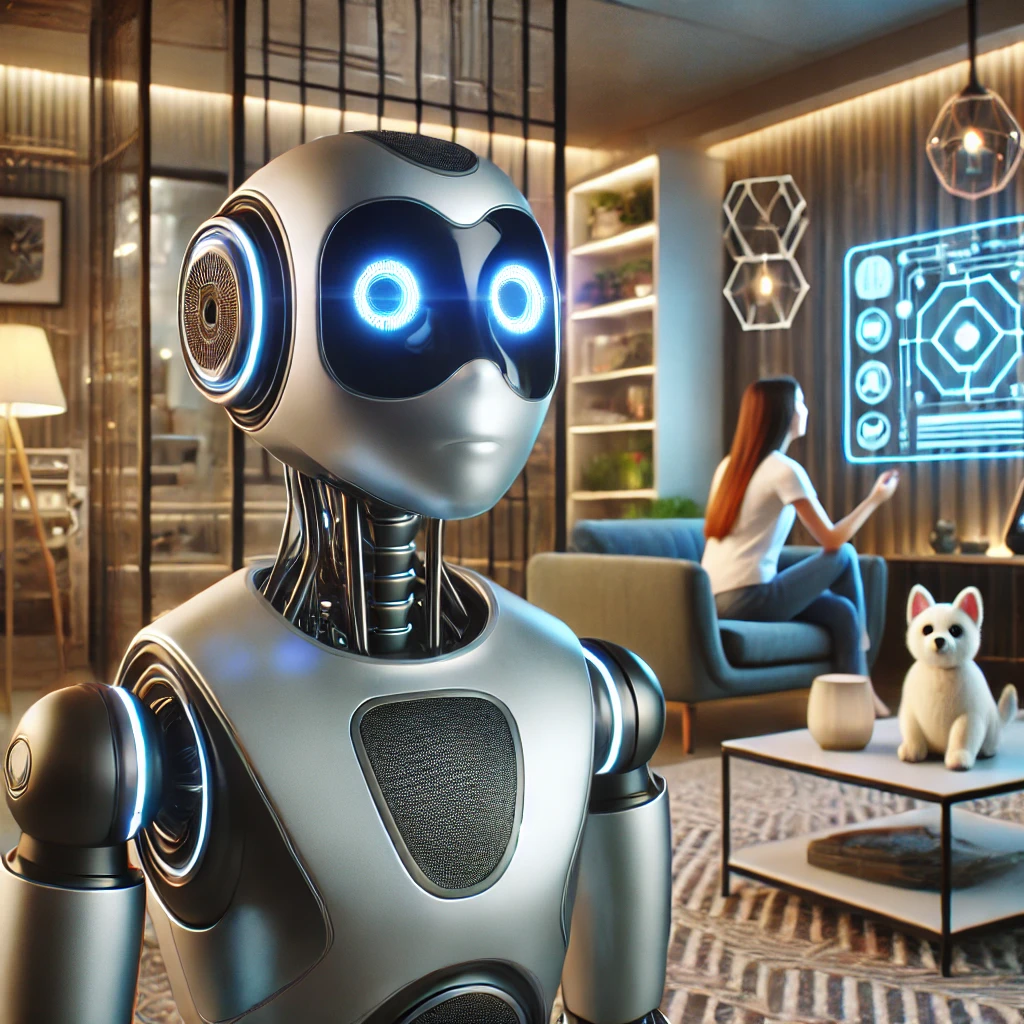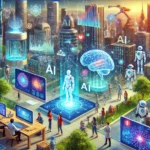AI robot pets represent an extremely advanced technological development which has appeared within the last few years. These innovative robotic companions were made to grant emotional comfort while entertaining users and help people complete their everyday activities. AI technology continues to advance through time so AI robotic pets develop greater similarities to real pets while eliminating the need for conventional pet maintenance tasks.
What is an AI Robot Pet?
A robotic pet companion operates through artificial intelligence systems to reproduce characteristics of real animal companions. .backup Robots demonstrate the ability to hear voices together with emotion expression as well as the capability to learn from user interactions while acknowledging physical touch events. AI robot pets exist as suitable substitutes to conventional pets for individuals who face restrictions from owning standard pets because of allergies or lifestyle vary or housing challenges.
Key Features of AI Robot Pets
- Robot pets built with advanced AI machine learning systems develop personal relationships with their owners which improve through successive behavioral observation.
- Voice and Facial Recognition capabilities enable several AI pets to detect their owners through these specific technologies.
- Management software in robotic pets possesses the capability to mimic emotional responses such as enthusiasm alongside happiness and inquisitiveness.
- A large number of AI pet companions possess independent movement abilities which lets them perceive their environment.
- Software sensors activate AI pets to respond through touch-based input during physical touch.
A Brief History of AI Robot Pets
- AI robot pets evolved into their current form since the early days of their development.
- AI-based companionship started when Tamagotchi and similar digital pets entered the market during the 1990s.
- The world saw Sony introduce Aibo in 1999 as the initial AI-controlled robotic pet device that could engage with users.
- The early 2000s brought significant progress in robotics technology that resulted in the creation of robotic pets which fulfilled the need for interpersonal interaction.
- Robot pets of current times demonstrate impressive artificial intelligence abilities which includes emotional sophistication and machine learning systems and realistic physical designs.
- These robotic mates increase the quality of human existence through developing various benefits.
- The robotic pet companions offer both emotional intimacy and solitude alleviation along with visible mental health improvements.
AI Robot Pets for Emotional Support
- AI pets specifically serve as excellent companions for single people who reside alone.
- Scientists have proven that spending time with AI pets leads to decreasing levels of stress and anxiety in people.
- Elderly Care benefits from AI robot pets which support senior citizens with their emotional needs and friendship.
AI Robot Pets in Therapy
- AI pets serve autism patients by becoming their non-condemning social support companions.
- The use of AI pets improves dementia patient engagement and stimulates their memory function.
- The benefits of animal therapy come from AI pets which use no animal unpredictability like common pets.
AI Robot Pets in Education
- AI pet adoption assists children in developing responsibility competencies and shows them how to care for others.
- STEM education benefits from Interactive AI pets that teach children core concepts of programming and AI along with robotics through interactive activities.
- AI pets become essential tools for speech therapy and language acquisition among young students through their therapeutic capabilities.
Types of AI Robot Pets
The market offers various AI robot pets which serve diverse user groups for different applications.
Companion AI Robot Pets
Emotional support together with engagement form the core purpose of these pets. The AI systems produce movements and responses which resemble those of natural animals.
- Examples: Sony Aibo (robotic dog), Hasbro Joy for All Companion Pets (robotic cats and dogs) Interactive AI Robot Pets
Interactive AI Robot Pets
Children and entertainment users can play educational games with these AI pets which were specifically designed for them.
- Examples: FurReal Friends, Cozmo Robot, Miko AI Robot
Assistive AI Robot Pets
The purpose of certain AI pets is to offer support to people with physical or mental disabilities through automated task execution. AI robotic guide dogs function as assistive tools for people who are visually impaired users.
- AI robot pets have become prevalent in the market yet society needs to evaluate critical ethical matters that arise from their proliferation.
- The ethics of developing AI pets stem from whether binding emotional connections between artificial pets and human users is acceptable.
- The adoption rate of animals could decrease if AI companion pets replace real pets.
- The safety of user information processed by AI pets remains unknown despite their data collection practice.
- Not all consumers can access AI pets because of their expensive nature which excludes people with limited financial resources.
The Future of AI Robot Pets
- Modern AI robotics technology leads to better and more authentic robot pets becoming available.
- Innovations in AI Robot Pets
- AI pets of the future will achieve higher emotional understanding which lets them interact properly with human feelings.
- AI pets will gain improved life-like reactions through their movements and behaviors.
- AI technology allows robot pets to develop unique features which match individual owner characteristics.
- AI pets will connect to smart home structures to present users with an integrated advanced experience.
- Some AI pets possess health monitoring capabilities to track user health alongside emotional tracking that leads to caregiver notifications when emergencies occur.
Challenges and Considerations
- Frankly emotional relationships between owners and AI pets create multiple ethical issues.
- The acquisition cost of sophisticated AI pets usually demands a high financial investment.
- The replacement potential of AI pets against genuine pets remains uncertain for human users.
- AI pets need continuous power supply because of their dependence on efficient operation.
Real-World Case Studies of AI Robot Pets
Case Study 1: Sony Aibo in Elderly Care
Research conducted in Japan established that Sony Aibo enhanced elderly residents in assisted living facilities by boosting their emotional state. The resident population experienced fewer feelings of loneliness and increased their social activities.
Case Study 2: AI Robot Pets in Autism Therapy
Multiple scientific investigations have established that AI robot pets provide benefits to autistic children for acquiring social behavioral abilities. Milo represents an AI robot which functions as a pet in therapy scenarios to teach autistic children better communication abilities.
Conclusion
AI robot pets transform both friendship relationships and human-machine communication in our current digital lifestyle. Smart robotic companions through various forms of emotional support and therapy together with entertainment purposes are transforming our interaction with technology. AI will continue developing so AI robot pets can go beyond their current capabilities to deliver more authentic interaction with humans. AI robot pets will develop based on three main areas including ethical issues and access patterns as well as their integration into daily routines throughout the upcoming years. AI robot pets will endure as an industry because they show signs of permanent evolution which promotes both convenience and social interaction among people across the globe.





